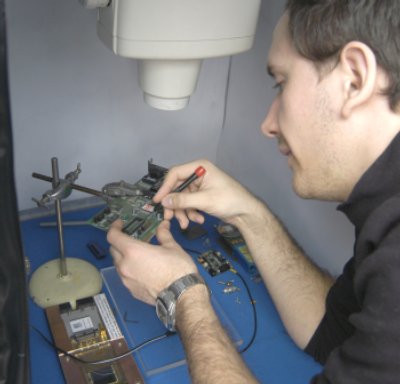Medipix
Medipix
The Medipix chip, or PCC (photon counting chip), is a digital CMOS imaging chip which emerged from particle detection in high energy physics experiments, designed at CERN in the micro-electronics group. The chip forms a hybrid photon counting detector with the active medium (semiconductor detector) bump-bonded to the electronics. This provides direct charge conversion of photons and therefore minimum image blurring.
Three generations of the Medipix chip and Medipix collaboration exits and also a Timepix chip which is a variante of the Medipix2 device:
- Medipix1
- 170um on the side square pixels, 64x64 pixels per chip, sensitive to positive charge only, 2MHz maximum count rate, 1 comparator per pixel
- Medipix2
- 55 µm on the side square pixels, 256x256 pixels per chip, sensitive to positive or negative charge, 2MHz maximum count rate, 2 comparators per pixel for energy windowing, 3 side buttable to allow tiling
- Timepix
- Each pixel can be programmed to work in one of 3 modes: Single particle counting, Time over Threshold (ToT) or Arrival time mode. In the case of ToT or Arrival time mode the clock ticks are counted. Otherwsie similar to Medipix2 but with a single energy threshold.
- Medipix3
- Similar to Medipix2 but with colour imaging and dead time free operation and with circurity to mitigate charge sharing effects.
Medipix at Glasgow
Glasgow has been active in the field of pixel detector research since the 1980s and is a founding member of the Medipix collaboration.
 As well as undertaking basic performance measurements on the Medipix chip at Glasgow we have several projects that exploit the Medipix devices. These include:
As well as undertaking basic performance measurements on the Medipix chip at Glasgow we have several projects that exploit the Medipix devices. These include:
- Medipix in ATLAS as a radiation monitor
- Medipix in a vacuum tube for microscopy
- Medipix with neutron converters for neutron imaging
- Medipix with 3D detectors for synchrotrons

